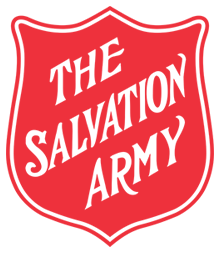
Plan
Volunteers make up the largest proportion of our workforce, committing themselves to mission delivery on a regular basis. The value and service volunteers bring to The Salvation Army is essential, which allows us to reach more people than we could without them. It is vital that we look at intentional strategies to best involve volunteers.
The first stage of successful volunteer engagement is Plan.
There are three components to effective planning:
- Clarify the purpose of the volunteer position.
- Assess whether you and your team can adequately support a volunteer in their position.
- Prepare to find the right person for the position.
Clarify
Managing volunteers effectively requires time and resources and, as such, planning is crucial.
You must have a clear understanding of why you need or want one or more volunteers in your program or service. This involves a proactive approach, rather than involving people simply because they have offered to volunteer.
A volunteer may be needed to fulfil:
- An existing role that another volunteer is no longer able to do or requires extra help.
- A task your existing team doesn’t have time/ experience to do.
- A support role to a corps officer or manager or for a one-off event.
A volunteer may add extra value by:
- Extending your services.
- Improving your resources.
- Enabling you to launch a new program.
We must always treat our volunteers with respect and acknowledge that they are valued members of The Salvation Army team. Their roles need to be clearly defined and include meaningful and impactful responsibilities.
Assess
After identifying clear reasons for either new or additional volunteers, consider the resources required to undertake the relevant tasks and whether your ministry unit/corps can fulfil these.
Kick-start your thinking!
- Do you have the resources to support a volunteer in their role?
- Who will be responsible for the recruitment process?
- Who will ensure the administration process is followed?
- Who will train and supervise the volunteer? A more experienced volunteer acting as a mentor or a buddy system may work.
Key question! Is your team volunteer friendly? That is, are volunteers welcomed, supported and valued?
Prepare
Before searching for potential volunteers, know what you are looking for. For example, what skills, attributes and experience are required to complete the identified tasks? The answers to these types of questions will inform what information should be included in a role description. Involve your team so everyone understands the importance of the volunteer role and ensure lines of responsibility are clarified.
Role Descriptions
A volunteer role description outlines the purpose of the volunteer role, personal qualities for success in the role, expected activities and outcomes of the role. Just as an employee would expect a job description, a volunteer role description is vital in setting expectations and ensuring a successful engagement between The Salvation Army and the volunteer.
A role description:
- Enables potential volunteers to understand the role and decide whether it is suitable.
- Sets boundaries for the role in relation to other volunteers and paid staff, helping to avoid conflict arising from misunderstandings.
- Enables the recruitment process to be objective and eases difficult conversations if someone is not suitable for a role.
- Provides a guide for both the volunteer and The Salvation Army to refer to if performance issues arise.
Email Stewardship
It is important to have a clear plan for what communications Behind the Shield volunteers will receive from the moment they show interest in volunteering with us.
Volunteer email stewardship is an integral part of thanking and recognizing volunteers. It is also the key driver in volunteer retention and encourages volunteers to help bring new volunteers into our organization. Most importantly, it builds a sense of community and belonging.
Ideally, it is best to:
- Send a "Thank You for choosing to volunteer with us" email within 24-76 hours of someone applying.
- Send an email when the candidate has or has not been selected.
- Send an email within 24-48 hours when a volunteer has completed their volunteer service with us.
- Send a "Would you volunteer again"? email twice a year (May/June and November/December) to past volunteers who are not currently volunteering with us.
The amount, frequency and timing of the emails will vary depending on your ministry unit/corps unit and what works for you. Adhering to a clear and consistent communication plan creates a feeling of community, builds relationships and keeps The Salvation Army in the minds of volunteers.
We have created sample emails for your use, but much like the plan, you are encouraged to customize them to fit your needs.
Legal Considerations
There is a risk a volunteer may expect employee entitlements from The Salvation Army. To minimize this risk, volunteer status must be crystal clear.
Make sure you:
- Have a role description to clarify this is a volunteer arrangement and cannot be misunderstood to have the same entitlements as an employment relationship.
- Have a signed role description, signed by both the volunteer and supervisor, stored on-site.
Letterhead
A letterhead is one of the most important printing collaterals in any organization. More than just a means of correspondence, it is also a physical representation of our Behind the Shield program. It is an essential part of our marketing communications strategy and you are encouraged to use it for any and all correspondence involving volunteer services.
Plan Checklist
Throughout the Plan stage, have you:
The planning process provides the opportunity to reflect on your specific needs and how these needs can be met. It is a chance to explore how your services/programs can be improved and, how your resources can be enhanced. It will help you utilize your time and resources effectively right from the start.
Please click on the links below to access the files for each Behind the Shield resource. All resources are available in both French and English. For some of these resources we have created a version that can be printed on any printer you have access to and a version that should be used if you are outsourcing to a print house. Please read the file names carefully and choose the resource that best suits your needs.

About Behind the Shield
Email and Letterhead:
- Thank You for Choosing to Volunteer General EN (Pre-Volunteer)
- Thank You for Choosing to Volunteer General FR (Pre-Volunteer)
- Thank You for Choosing to Volunteer Youth EN (Pre-Volunteer)
- Thank You for Choosing to Volunteer Youth FR (Pre-Volunteer)
- Thank you for volunteering EN (Post-Volunteer)
- Thank you for volunteering FR (Post-Volunteer)
- Thank You but No Availability EN
- Thank You but No Availability FR
- Would You Volunteer Again EN
- Would You Volunteer Again FR
- Letterhead EN
- Letterhead FR








